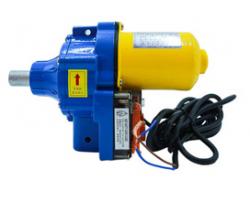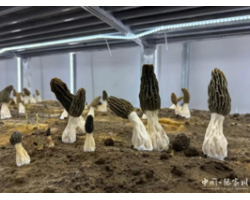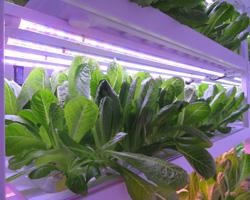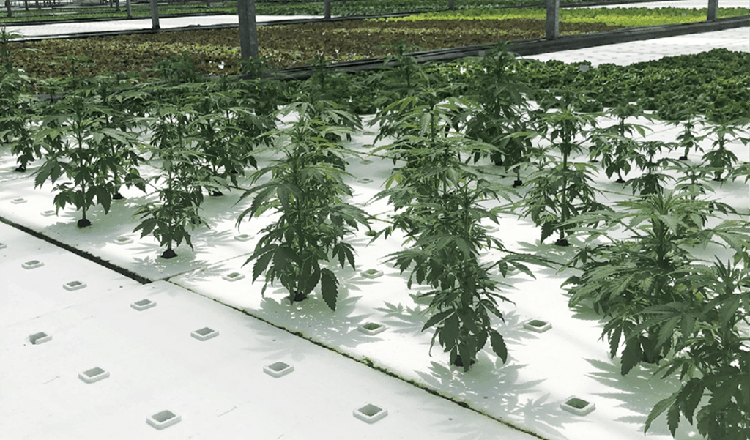Is Greenhouse Hemp Growing for You?
Is Greenhouse Hemp Growing for You?
Jolene Hansen March 24, 2020 by https://www.hempgrower.com
Features - Greenhouse Grower
1. Year-Round Cultivation
2. Seed Production, Breeding and R&D
3. Extended Growing Seasons
5. Optimized Yields
6. Pest Pressure and Control
7. Increased Regulation Ahead
8. Limited Space or Resources
Greenhouse cultivation provides advantages, especially to those growing hemp for clones or for CBD and other cannabinoids.
Advances in controlled environment agriculture (CEA) have changed the way the world grows food. It’s only natural that CEA greenhouse technologies are changing the way some farmers grow hemp, too. While many legacy growers have considered hemp an outdoor-only crop, greenhouse hemp production is gaining fans among those focused on propagation and production of premium hemp products that benefit from a controlled environment.
But is greenhouse growing for you? Hemp Grower spoke to five greenhouse hemp growers to understand how and why they choose to grow hemp in greenhouses. The following are their top reasons for greenhouse growing.
With appropriate greenhouse technology, seasonal limitations on hemp harvests no longer apply. Ambary Gardens, a vertically integrated Denver-based hemp company, produces cannabidiol (CBD)-rich hemp in greenhouse environments designed for year-round cultivation. Josh Howdyshell, head of cultivation, and Nick Stay, cultivation specialist, incorporate light deprivation and supplemental LED lighting to ensure perpetual harvests in their 8,000-square-foot grow.
“When you grow outdoors, you pretty much get one shot per year, so all your eggs are in one basket,” Howdyshell says. “Light deprivation—something an outdoor grower obviously can’t do—is the key component that allows us to flower year-round. We can essentially shorten the days and force the plants to flower at any time of the year that we desire.”
Paul Frank, CEO and founding partner of Hemp Solutions of Minnesota—which cultivates flower (largely for CBD oil production) as well as grows and sells clones—says that year-round production goals led the company, headquartered in the Minneapolis-St. Paul metro area, to add greenhouse production to its 50 acres of outdoor hemp. “In our northern climate, if you’re heated indoors, you can grow year-round and get three to four rotations depending on how good you are and what varieties you’re growing, whether you’re growing autoflowering strains [not dependent on photoperiods] or classic strains,” he says.
On Colorado’s Western Slope, High Elevation Hemp has a 9,000-square-foot state-of-the-art greenhouse in addition to hoop houses and 100 acres of outdoor hemp grown for CBD. Co-owner Martin Muldowney says seed production for sale and their own use is the company’s primary reason for growing in the greenhouse. That’s done early in the year before the outdoor growing season—and airborne pollen—arrives.
“We build and breed and develop our own strains and feminized seeds, so we need light deprivation for that,” he says. “All our seed production is done in the light deprivation greenhouse. We start all our seeds for the fields in there as well.”
For New York greenhouse producer Wheatfield Gardens, the move into greenhouse hemp came as an expansion of its existing hydroponic lettuce production. Part of that plan included a fully controlled grow room that is lit entirely with artificial light.
Wheatfield CEO Paal Elfstrum explains the indoor room plays a vital role in seed production, clones and trials of new varieties. “Hemp is a very unsettled science,” he says. “With that indoor space, you’re able to control every aspect of the environment so you can really manipulate that during these R&D trials.”
A majority of Wheatfield’s primary hemp production happens seasonally in a traditional greenhouse setting under natural light, though future enhancements may incorporate light deprivation and other measures.
The company starts production in April with about 5.5 greenhouse acres—less than half of what Wheatfield has under glass. “Here in New York, all outdoor hemp growers that are growing for CBD need to get a head start on the season, so much of that occurs in the greenhouse,” Elfstrum says.
By concentrating on autoflowering hemp varieties, which typically are ready for harvest in 60 to 90 days, Elfstrum says the seasonal greenhouse program allows for multiple crop cycles. Several weeks of protected spring growth creates a significant advantage over outdoor growers, as do extra weeks of maturation come fall.
In Ambary’s area, Howdyshell says an early frost in September can change the entire outcome of outdoor crops—a worry eliminated with a climate-controlled greenhouse.
Greenhouse production allows for consistent controlled environments that can help protect against wind, hail, drought and other weather-related threats. The nurturing environment is also important for clones, whether being hardened off for field use or destined for greenhouse grows. “It’s definitely a necessary component [for clones], even for outdoor gardens,” Howdyshell says.
Greenhouse structures may also help limit cross-pollination from neighboring fields. Muldowney describes pollen drift as one of the biggest risks to outdoor growers. Even with its greenhouse, High Elevation limits indoor seed production to non-pollen seasons, as pollen can still sneak in through vents and other unsealed entries. High Elevation’s smokable hemp is also limited to the greenhouse.
Read more: How Seeded and Seedless Hemp Crops Vary for Different End Uses
“Outdoors, we’re growing exclusively for CBD extraction. Growing smokable hemp has become too difficult in many areas outdoors because there’s so much pollen. Everything is getting seeded, and that’s not what you want in a smokable product,” he says. “When you get pollinated and you have seed production, it decreases your CBD percentages. Then, a lot of your weight becomes seed. It’s the enemy of CBD production.”
Elfstrum believes cross-pollination problems will grow as hemp acreage allotted for uses such as fiber and seed expands. “Outdoor growers trying to grow [for] cannabinoids are going to really run into some risks with pollination from neighboring farms,” he predicts. “If you have acres of seed and fiber hemp within five miles of your CBD farm, your whole crop is very likely to get pollinated, which would bring down your cannabinoid content precipitously.” Most reports Hemp Grower has seen place pollen’s potential drift distance between 10 to 30 miles.
Read more: Drifting Into New Legal Territory
While greenhouse growing may provide some protection, Muldowney says it’s not a catch-all solution to the pollen problem. “That’s also why we [develop] seeds. We’re trying to provide our area with as much feminized seed at an affordable rate as possible to try and eliminate some of these problems,” he says. “Helping your neighbor and helping your neighbor understand are very key.”
While overcoming environmental variables gives greenhouse growers a step up, greenhouses also offer the opportunity to augment nature and optimize growing conditions for hemp cultivars.
“Because we’re not at the will of the weather, we’re able to produce consistent growing atmospheres. The controlled environment gives us better control over soil quality, water use and [pests],” Muldowney says. “We’re able to boost our cannabinoid profiles because the plants are just seeing a much better suited environment for their needs.”
At Ambary Gardens, which produces full-spectrum CBD (containing all the cannabinoids naturally occurring in the plant, as compared to a CBD isolate), an LED-supplemented greenhouse ensures the crop receives optimal light levels year-round. In 2016, trials at the facility compared an Ambary hemp strain grown under natural light to the same strain grown with supplemental full-spectrum LEDs. Results from the LEDs indicated an increase of more than 40% in the yield of usable plant material and increased consistency in per plant yields. Howdyshell and Stay say the added expense of the lighting and energy use was more than offset by gains in yields, potency and efficiency.
“We basically are removing any unnecessary plant stress by growing inside,” Howdyshell says.
An on-site microgrid at Wheatfield Gardens generates electricity and heat with a by-product of carbon dioxide (CO2). Captured CO2 is then pumped into the greenhouse. According to an article in Hemp Grower’s sister publication Cannabis Business Times, “The CO2 in the air in a greenhouse or grow room can be depleted rapidly by actively growing plants. Plant growth ceases when the level gets below 200 parts per million (ppm). … Research has shown that levels of 800 to 1,000 ppm can increase cannabis yields 10% to 25%.”
“Hemp responds to CO2 very well,” Elfstrum says. “We get a much bigger plant.”
Growing hemp in a controlled greenhouse environment doesn’t eliminate pest and disease problems, but it does shift the focus and allow for different approaches to control. Howdyshell explains this is especially important for pesticide-free hemp grown with organic farming methods.
“Outdoors, there’s a lot of natural competition where there’s good bugs and bad bugs, creating a balance,” he says. “In the greenhouse, there’s hardly any competition because we’ve created this clean space for these plants to grow. So, it does leave a window for pests to take over quickly if we’re not careful.” Ambary’s multi-faceted approach to pest management includes the use of natural predators such as predatory mites and wasps.
Read more: How to Distinguish a Hemp Pest From a Mere Annoyance
Without proper environmental control, enclosed greenhouse environments can lead to undesirable conditions, such as high heat and humidity, that favor pests and plant disease. Elfstrum says disease prevention through humidity control is especially challenging in summer months: “It’s not all sunshine and rainbows in the greenhouse. Air movement within the space is critical. … You have to take a very active approach to prevent a mold farm.”
Elfstrum believes that greater control afforded by a greenhouse growing environment enhances supply-chain traceability—something he sees as inevitable for the CBD industry.
“From our experience with lettuce, we know food safety and regulations. … If there’s a problem with a head, we need to be able to trace it back to the seed,” he says. “We’re very cognizant of the importance of this, especially to big retailers as they put their brand on the line. … A lot of [mainstream retail] brands are not putting anything on their shelves [if] they don’t know where the raw material comes from.”
Howdyshell and Stay explain that field production may make more sense for growers focused on end uses such as fiber. “If you’re growing for fiber, you need a lot of land, you need a lot of plant. In a greenhouse, you just don’t have that space, so it makes sense to go outdoors for the textile-based crop,” Howdyshell says. “When you’re growing inside, to justify the electrical costs and all those sorts of things, growing for resin—not just CBD, but terpene content and other cannabinoids—helps with the return from an economic standpoint. We can really maximize that in that greenhouse setting.”
For hemp farmers considering greenhouse growing, Muldowney stresses first learning and understanding the needs in your market. “In markets such as smokable hemp, indoors makes sense because you’re getting a premium for your product,” he says. “If you are just growing for biomass, I would never suggest growing in a greenhouse because your costs are just too high. You have to know your costs and know that you can sell it at a price point that works for you.”




